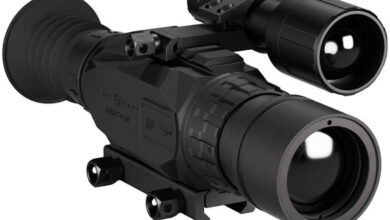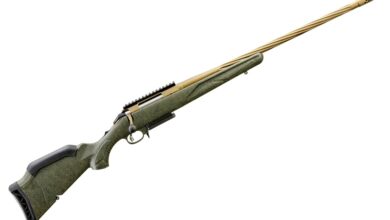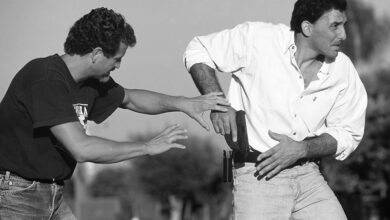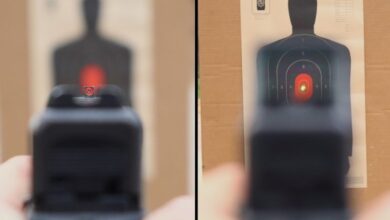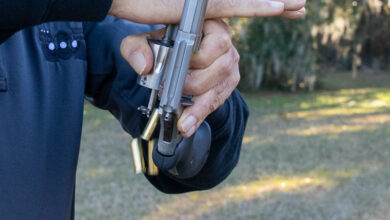More is Better: 2-point vs 1-point slings
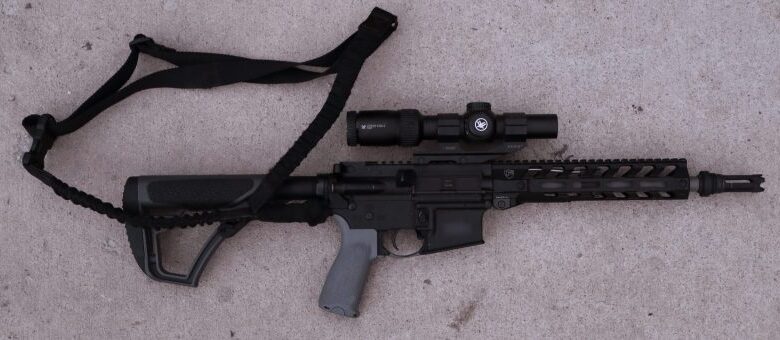
Rifle slings are often underrated pieces of equipment. While optics, lights, and additional accessories get significant attention, the answer for many is to just throw a sling of any variety on the rifle. This dismissive attitude towards slings tends to change after they’ve spent hours hauling their rifle around with “whatever” was thrown on their rifle. I may sound a little judgmental; after all, I was “that guy” at one time.
If you’ve ran one for any extended period of time, you know a quality rifle sling makes a difference in comfort, performance, and capability. With most slings, buying cheap translates to getting cheap, and luckily, slings aren’t outrageously expensive for the most part. If price isn’t as much of an issue, why buy one particular sling over another? Better yet, let’s tackle the two most common slings: one-point and two-point. Each sling has its pros and cons, but I’m openly in the two-point sling camp. Regardless of my acknowledged personal biases, let’s dive into the finer points of single and two-point slings.
What are One-Point Slings?
The one-point or single-point sling has been around for a minute. For many veterans, this sling is a familiar platform. The single-point sling normally attaches to the rifle’s end plate and loops around the shooter’s body. This design connects to the rifle at only one point and provides a lot of movement and flexibility with the rifle—especially when wearing a plate carrier.
What are Two-Point Slings?
The two-point sling mounts to two locations on the rifle. Whereas the single point normally mounts to the end plate, the two-point normally secures at the rifle’s stock in one location and at the rifle’s forend or rail system at the other. The two-point system improves the rifle’s stability when slung compared to a single point.

The Pros and Cons of the One- and Two-Point Slings
I already touched briefly on a few of the features inherent to one-point and two-point slings. However, there’s a lot more to these slings that make one shine over another, depending on the environment, application, and the shooter’s setup. Ultimately, depending on your needs, one may be a little more suitable for your purposes than the other.
Stability – Movement and Retention
The sling’s purpose starts with retaining the long gun on your person. Whether hunting or carrying for law enforcement, military, or other defensive purposes, the sling retains the long gun and keeps it available for immediate access. However, immediate access must balance with carrying, standing, or running with that rifle. If the sling setup isn’t secure, the rifle will become uncomfortable over long periods and fling around during movements.

The single-point sling sits conveniently in front of the body with one point of attachment. Consequently, the rifle is very floppy and gets in the way if not pushed aside. For males with experience on a single-point sling, we learned early not to let the rifle hang low nor let it swing in front of us. The rifle had a convenient way of hitting certain sensitive locations if left swinging around.
The two-point sling provides greater stability for the shooter than a single-point sling — both during shooting and when slung. With two points of contact securing the rifle to the sling, users maintain better control over the slung rifle. Ideally, the sling’s securing points to the rifle should be spaced out as far as possible. For example, mounting the sling towards the muzzle end of the forend and then on the stock reduces the rifle’s “flop” when slung. This mounting style also has additional benefits that I’ll discuss later.
Shoulder Transitions
Close-Quarters Battle (CQB), room-clearing, etc, require shooters to work in dynamic and evolving environments. Shooters working in those environments often transition from their rifle on their dominant shoulder to the non-dominant side. During these transitions, the sling should not interfere. Single- and two-point slings excel in these areas if properly set up.
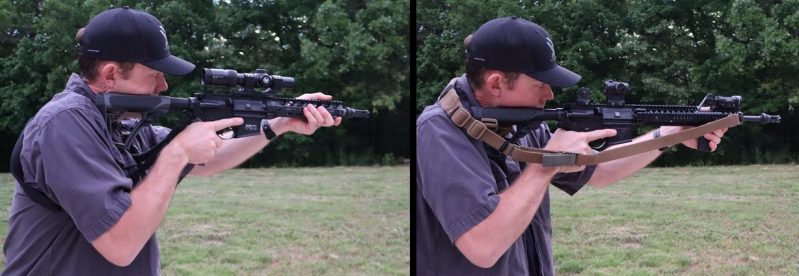
The single-point sling allows for a little more flexibility without adjustment when switching shoulders. A two-point sling requires the shooter to adjust its length before transitioning. However, many modern two-point slings have quick adjustment tabs that shorten or lengthen the sling in a couple of seconds or less. While an extra step compared to the single-point sling, the two-point sling has the advantage of greater adjustment and stability.
Accuracy
Does a sling really contribute to accuracy? Surprisingly, yes it does. However, not all slings work the same or have been set up correctly. When used properly, two-point slings provide excellent stability over single-point designs.

The two-point sling setup stabilizes the rifle against the shooter in a variety of shooting positions. When shouldering a rifle, the shooter normally has four points of contact: hands, cheek, and shoulder. These four contact points require the shooter to maintain them through passive and active pressure. However, a properly fitted two-point sling snugs the rifle into the shooter’s shoulder.
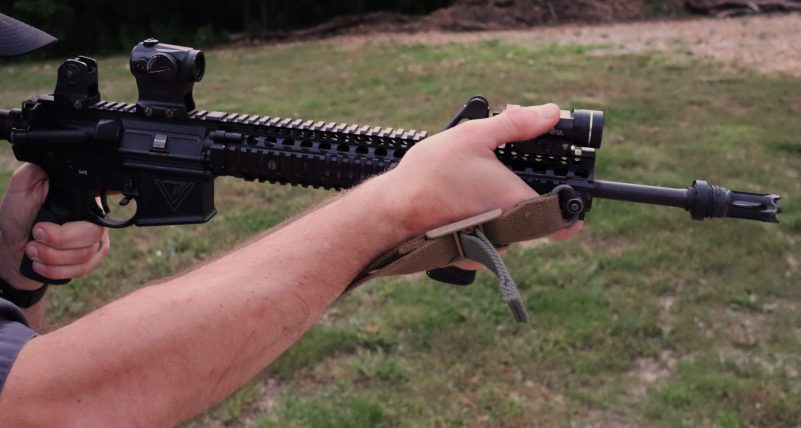
Furthermore, the shooter’s support elbow can adjust the sling’s tension regardless of the position. If you require a tighter, more stable platform, simply move your elbow up or down on the sling. This pulls the sling into your body and reduces felt slack. This method works great with a two-point sling but isn’t an option with single-point designs.
Is one better than the other?
Finding what sling works for you is a personal decision based on your needs and uses. However, some slings work better than others. Overall, the two-point sling is the best design for securing your rifle to you. Furthermore, it provides a stable shooting platform in virtually any shooting position. While some may disagree, this has been my experience and observations of running both slings for nearly two decades.
Earlier, I pointed out not all slings work the same nor is their construction equal. If you decide to run a two-point sling, purchase one of the many reputable ones available from companies like Blue Force Gear or Magpul. In fact, Magpul offers several sling options that work as single or two-point. A quick adjustment tab is strongly recommended for transitions and quick adjustments in the field to properly sling or stow the rifle when not in use. With a little practice, you’ll discover the two-point sling performs exceptionally well and fulfills virtually any need you can think of for a sling.
The post More is Better: 2-point vs 1-point slings appeared first on The Mag Life.
Read the full article here

